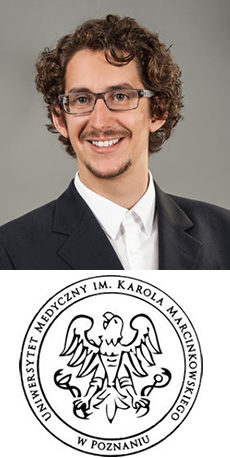Dr. Marco Roy

Dr. Marco Roy
- Title of DDS in 2013 Poznan University of Medical Sciences English Program.
- Assistant, Prosthodontic Dep. Poznan University of Medical Sciences since 2014- till today
- Practicing as Implantologist in Poznan (Poland, Candeo clinic) and Pisa (Italy, Private practice)
- Owner of a dental office specialized in dental implantology and general dentistry in Pisa
- Author of scientific articles published on international journals
- Last year of PhD in the field of dental implantology
- Co-founder and leader of PUMS students research group
- Science research team award 2017
- Trainer and Lecturer Nuvola (Invisible alignment System)
- Member of IADR (International association of dental research),
- Member of ICP (international college of prosthodontics)
- Member of CAI Academy (computer aided implantology academy)
Abstract
Titanium implant surfaces inevitably undergo biological aging, associated with lower bone-implant-contact (BIC) values. Already 4 weeks from manufacturing the implant surfaces are contaminated with polycarbonyls and hydrocarbons that modify their physio-chemical state, leading to significant reductions of BIC values (45-75%) and likely, low numbers of stem cells actually reaching the surface of the fixture. However, photofunctionalization (UV light irradiation) of the surface can reverse the biological aging of titanium, recovering BIC values virtually to 100% and greatly enhancing the osteointegration process. Moreover, long-term outcomes of dental implants are not dependent only on the intrinsic osseointegration process but also on the seal that the soft tissues create around the prosthetic abutment. The quality of this seal has an impact on the bacterial penetration and therefore can prevent bone loss and provide a gingiva which is in better condition. Therefore, we analyzed abutment materials namely: TiO2, ZrO2 and PEEK from a physico-chemical point of view, we analyzed the atomic composition before and after UVC irradiation, while for the biological aspect we analyzed the cell attachment/proliferation of the fibroblasts and osteoblasts, paying attention to the changes in patterns of gene expression before and after UVC irradiation. Being able to increase the level of osteointegration and soft tissue integration with photofunctionalization would improve the quality of life of many patients, who are presently rehabilitated with removable partial or complete dentures, because a fixed solution with implants is considered contraindicated.
